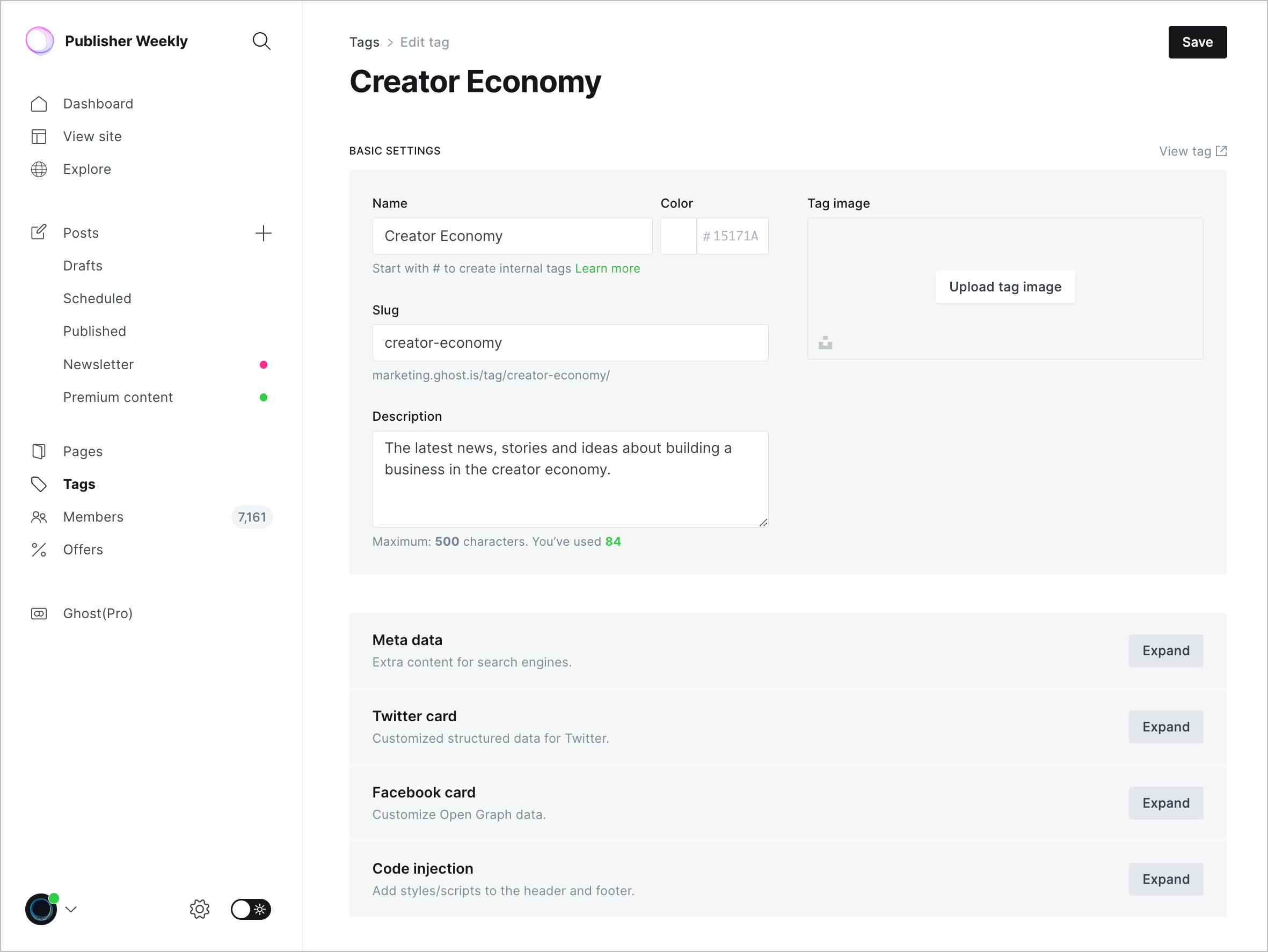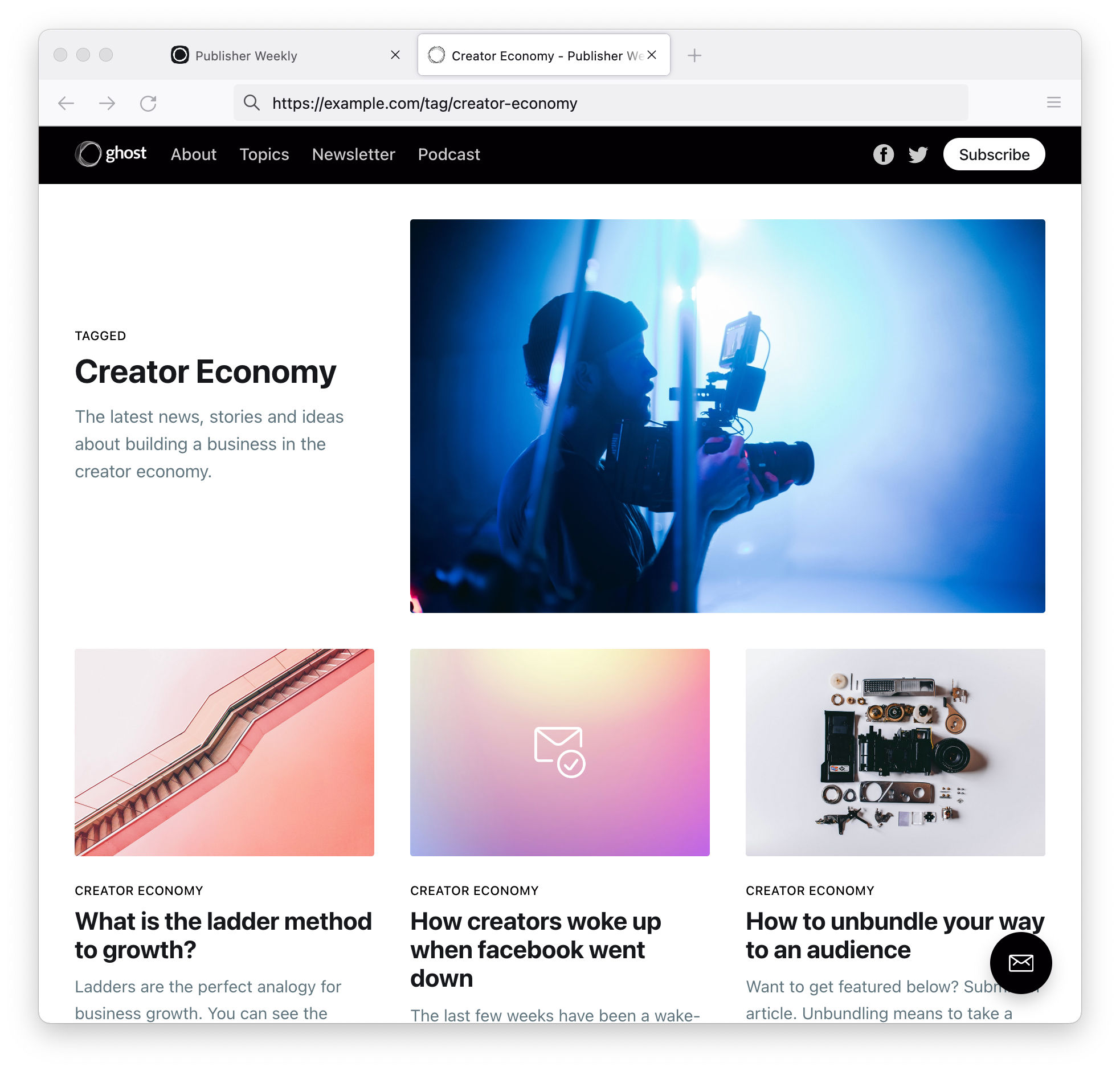Ghost has a flexible tagging system, which can be used to organize your content both in Ghost Admin and on your website for your visitors.
Tags can quickly be added from the Post settings menu, with a menu to select existing tags, or you can add new tags from here.
Managing tags
Navigate to the Tags page from the sidebar of Ghost Admin to find a full list of your tags. Here you can see how many posts are assigned to each tag, and click into each tag to edit its settings.

Each tag has some basic settings and meta data associated with it. It's recommended to fill out all relevant information for each tag on your site, to improve the user experience for your visitors, and populate rich structured data for the search engines.

Tag collections
Ghost automatically places tagged posts into a tag collection — a designated feed of content that has its own URL.
For example, you may tag some content with "News" and other content with "Podcast," which would create two tag collections automatically:
yoursite.com/tag/newsyoursite.com/tag/podcast
If you tag a post with both News and Podcast — the post appears in both tag collections.

Tag collections are dedicated content collections for each category of content that you have. They have their own pages, their own RSS feeds and can support their own cover images and meta data.
Primary tags
The first tag in the list is always given the most importance, and some themes will only display the primary tag (the first tag in the list) by default. Tags can be re-ordered from the post settings menu. In this example, "News" is the primary tag:
News, Technology, Startup
Internal tags
Internal tags use a hashtag and can be used for special styling that is presented in a theme or to help filter and organize content internally.
For example, if you sometimes publish posts with video content - you might want your theme to adapt and get rid of the sidebar for these posts, to give more space for an embedded video to fill the screen.
News, #video
Here, the theme would assign the post to the publicly displayed tag of News, but it would also keep a private record of the post being tagged with #video, which can then be used to apply special styling via your theme.